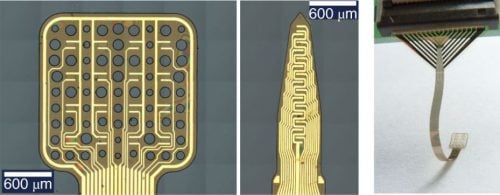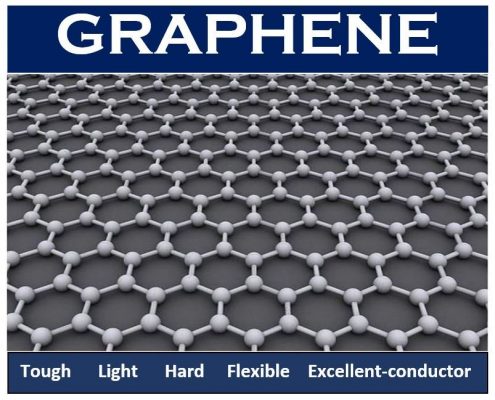Scientists have developed a graphene-based implant that can record brain activity at extremely low frequencies over large areas. The Barcelona researchers say their creation unlocks a wealth of information found below 0.1 Hz.
A team from the Catalan Institute of Nanoscience and Nanotechnology and the Barcelona Microelectronics Institute developed the prototype. In collaboration with researchers from the August Pi i Sunyer Biomedical Research Institute, they adapted it for brain recordings.
The researchers wrote about their work in the prestigious journal Nature Materials (citation below). The authors say that this ‘groundbreaking technology’ promises to give us a better understanding of the brain. It will probably also pave the way for a new generation of brain-computer interfaces.
We are learning more about the human brain every year at an accelerating pace. However, there is still so much about it that we don’t know. Scientists have been using electrode arrays to record electrical activity in the brain for several decades.
They have mapped activity in different parts of the brain to understand what it looks like. They have also done this to understand when everything is working, what is happening, as well as when nothing is happening.
Graphene
Graphene is the lightest, thinnest, and strongest material that we know of. It is approximately 200 times stronger than the strongest steel. It is also the world’s best conductor of heat and electricity. Despite being incredibly strong, it is extremely flexible.
Graphene consists of a single layer of pure carbon atoms. They are arranged in a honeycomb, hexagonal lattice pattern. It is so amazingly thin that scientists refer to it as a two-dimensional object.

Graphene-based implant detects activity below 0.1 Hz
Researchers have been able to detect brain activity only above a specific frequency threshold. That is, until now. The new graphene-based implant overcomes this frequency limitation.
With the graphene-based implant, technology has moved away from electrodes. It uses a new transistor-based architecture which amplifies signals in the brain in situ. It then transmits the signals to a receiver.
Thanks to its graphene content, the implant can support significantly more recording sites than a standard electrode array. It is also very slim and flexible. Therefore, we can use it over large areas of the cortex without the risk of rejection. Also, it does not interfere with normal brain function.
According to a press release by the Catalan Institute of Nanoscience and Nanotechnology, the result is:
“An unprecedented mapping of the kind of low frequency brain activity known to carry crucial information about different events in the brain such as the onset and progression of epileptic seizures and strokes.”

Graphene-based implant a ‘groundbreaking’
For neurologists, the implant means that they can finally have access to many unanswered clues about the brain. Renowned clinical epilepsy specialist, Prof. Matthew Walker, of University College London, referred to the graphene-based implant as “groundbreaking technology.”
It has the potential to transform how we record and view the brain’s electrical activity, Prof. Walker added.
This new technology has other exciting applications apart from precise mapping and interaction, the authors wrote.
Some of the researchers are adapting the graphene-based implant to restore speech and communication. Speech and communication restoration is part of BrainCom, a European project.
Regarding BrainCom, the Catalan Institute of Nanoscience and Nanotechnology says:
“This project will deliver a new generation of brain-computer interfaces able to explore and repair high-level cognitive functions, with a particular focus on the kind of speech impairment caused by brain or spinal cord injuries (aphasia).”
Citation
“High-resolution mapping of infraslow cortical brain activity enabled by graphene microtransistors,” Eduard Masvidal-Codina, Xavi Illa, Miguel Dasilva, Andrea Bonaccini Calia, Tanja Dragojević, Ernesto E. Vidal-Rosas, Elisabet Prats-Alfonso, Javier Martínez-Aguilar, Jose M. De la Cruz, Ramon Garcia-Cortadella, Philippe Godignon, Gemma Rius, Alessandra Camassa, Elena Del Corro, Jessica Bousquet, Clement Hébert, Turgut Durduran, Rosa Villa, Maria V. Sanchez-Vives, Jose A. Garrido, and Anton Guimerà-Brunet. Nature Materials, 31 December, 2018. DOI: https://doi.org/10.1038/s41563-018-0249-4.
